
Best Psychiatric Hospital Beds: Safety Features, Pricing & Fast Delivery
Specialized psychiatric hospital beds combine essential safety features with therapeutic functionality, providing secure environments for patients while supporting clinical care needs.
Key Takeaways:
- Psychiatric hospital beds feature tamper-resistant designs for patient and staff safety
- Key safety features include rounded edges, enclosed frames, and anti-ligature design
- Quality psychiatric beds balance security with patient comfort and dignity
- Professional installation ensures proper setup and staff training
- Financing options and fast delivery available for facilities needing immediate solutions
- Long-term value comes from durability, ease of cleaning, and robust construction
These specialized beds incorporate tamper-resistant components, enclosed frames, and anti-ligature designs that protect vulnerable patients while maintaining comfort and dignity during treatment.
Top Recommended Psychiatric Hospital Beds
 Medacure Behavioral Health Bed • Fully enclosed anti-ligature base • Tamper-resistant fasteners • Staff-controlled electric functions • Reinforced institutional-grade frame View Product |
 Secure Psychiatric Care Bed • Complete anti-ligature design • Concealed wiring systems • Tamper-resistant components • Institutional-grade locking View Product |
 Behavioral Health Safety Bed • Fully sealed frame design • Staff-only control access • Impact-resistant surfaces • Antimicrobial finishes View Product |
Understanding Psychiatric Hospital Beds
Psychiatric hospital beds differ significantly from standard hospital beds due to their specialized safety features and robust construction. These beds are specifically engineered to address the unique challenges in behavioral health environments, including preventing patient self-harm, ensuring staff safety, and withstanding potential misuse while maintaining therapeutic functionality.
At MedShopDirect, we understand the critical importance of proper equipment in psychiatric care settings. While traditional hospital beds are designed primarily for medical recovery, psychiatric models incorporate specialized safety features without sacrificing therapeutic positioning and comfort necessary for comprehensive care.
The types of electric beds for home use differ substantially from psychiatric models, which require institutional-grade safety features and tamper-resistant design elements. For facilities seeking appropriate equipment, understanding these specialized requirements is essential to making informed purchasing decisions.
Let's explore the essential features, benefits, and selection criteria for high-quality psychiatric hospital beds to help you make informed purchasing decisions for your facility.
Essential Safety Features of Psychiatric Hospital Beds
Safety represents the foremost consideration in psychiatric bed design:
Anti-Ligature Design Elements
Preventing potential attachment points for ligatures is critical:
- Enclosed Frame Design - Eliminates gaps and openings under the bed
- Smooth, Rounded Edges - No sharp corners or protrusions
- Cable Management Systems - Concealed wiring and tamper-resistant controls
- Sealed Mechanisms - Inaccessible moving parts and hinges
- Flush-Mounted Components - Elimination of hooks, loops, or tie-off points
These design elements significantly reduce risk while maintaining full functionality.
Tamper-Resistant Construction
Psychiatric beds feature reinforced components that resist tampering:
- Heavy-Duty Frames - Withstand excessive force and prevent dismantling
- Security Fasteners - Require specialized tools for removal
- Reinforced Welds - Enhanced durability at connection points
- Impact-Resistant Materials - Withstand potential abuse without creating hazards
- Secure Motor Housing - Protected electronic components
This robust construction ensures long-term durability in challenging environments.
Controlled Mobility Features
Safe mobility is carefully engineered:
- Locking Caster Systems - Staff-controlled movement with tamper-resistant locks
- Floor Anchoring Options - Permanent or semi-permanent installation possibilities
- Secure Braking Mechanisms - Prevent unauthorized bed movement
- Hidden Transport Controls - Accessible only to staff
- Secure Height Adjustment - Controlled elevation to prevent entrapment risks
These features allow necessary bed mobility while maintaining safety protocols.
Balancing Safety and Therapeutic Function
Quality psychiatric hospital beds must balance safety with therapeutic benefits:
Clinical Positioning Capabilities
Despite safety modifications, psychiatric beds maintain essential clinical functions:
- Controlled Head Elevation - Supports respiratory function and activities
- Partial Fowler Positioning - Enables comfortable seated positions for therapy
- Secure Knee Gatch - Prevents sliding while maintaining comfort
- Staff-Controlled Adjustment - Ensures proper positioning under supervision
- Trendelenburg Capability - Available when clinically necessary with safety protocols
These positioning options support medical needs while maintaining security protocols.
Comfort Considerations in Psychiatric Settings
Patient comfort remains important despite safety priorities:
- Pressure Management - Properly designed surfaces prevent pressure injuries
- Supportive Mattress Systems - Compatible with specialized hospital bed mattress options
- Noise Reduction - Quiet operation minimizes sleep disruption
- Appropriate Firmness - Balanced support for extended bed rest
- Temperature Management - Materials that prevent overheating
Comfort features support recovery by promoting rest and reducing agitation.
Selection Criteria for Psychiatric Facility Beds
When evaluating psychiatric hospital beds for purchase, consider these factors:
Facility-Specific Requirements
Different psychiatric settings have unique needs:
- Acute Psychiatric Units - Maximum security features with clinical functionality
- Long-Term Behavioral Health - Balanced safety and comfort for extended stays
- Geriatric Psychiatric Care - Combined safety with features from best beds for elderly patients
- Adolescent Units - Age-appropriate designs with comprehensive safety features
- Crisis Stabilization Settings - Maximum durability and security features
Assess your specific patient population and care model when selecting appropriate beds.
Regulatory Compliance
Ensure beds meet relevant standards:
- Joint Commission Requirements - Compliance with current safety guidelines
- State-Specific Regulations - Adherence to local mental health facility standards
- ADA Considerations - Accessibility requirements for diverse patients
- Fire Safety Compliance - Materials meeting institutional fire codes
- Psychiatric Facility Design Standards - Alignment with specialized environment requirements
Documentation of compliance should be available for all psychiatric bed models.
Staff Safety Considerations
Proper bed design enhances staff safety:
- Ergonomic Access - Proper height and positioning for care delivery
- Clear Sightlines - Design that eliminates blind spots or hiding places
- Secure Positioning Controls - Staff-only access to bed functions
- Emergency Features - Quick position changes for crisis situations
- Cleaning Efficiency - Smooth surfaces for rapid decontamination
Staff efficiency and safety directly impact quality of care and facility operations.
Additional Psychiatric Bed Options
Beyond our top recommendations, these specialized beds address specific psychiatric care needs:

Ultra-Low Psychiatric Safety Bed
This specialized psychiatric bed combines ultra-low height capabilities with comprehensive safety features for high-risk patients. The minimal height from floor significantly reduces fall injury potential while maintaining a fully enclosed, anti-ligature design appropriate for behavioral health settings.
Key Specifications
- Ultra-low height minimizes fall injury risk
- Fully enclosed frame with no access points
- Staff-controlled height adjustment
- Institutional-grade construction
- Floor-lock system for maximum stability
Ideal Applications
- High fall-risk psychiatric patients
- Facilities using minimal restraint protocols
- Combined geriatric and psychiatric units
- Settings emphasizing least-restrictive environments

Bariatric Psychiatric Hospital Bed
This specialized bed combines the safety features required in psychiatric settings with the reinforced structure and expanded dimensions of a bariatric hospital bed. The design maintains anti-ligature principles while accommodating larger patients with enhanced stability and weight capacity.
Key Specifications
- Expanded width and reinforced frame
- Enhanced weight capacity with safety focus
- Anti-ligature design throughout
- Institutional-grade components
- Secure mobility system
Ideal Applications
- Behavioral health units serving diverse populations
- Facilities needing flexibility in patient accommodation
- Bariatric psychiatric programs
- Units requiring maximum versatility

Residential-Style Psychiatric Bed
This innovative bed combines the safety features required in psychiatric settings with a more residential appearance for transitional programs and lower-acuity environments. The design incorporates comprehensive safety elements in a package that supports normalization principles in treatment settings.
Key Specifications
- Anti-ligature design with residential aesthetics
- Reinforced components with discreet appearance
- Secure functionality in residential-looking package
- Institutional durability with homelike design elements
- Appropriate for progressive treatment programs
Ideal Applications
- Step-down psychiatric units
- Residential treatment facilities
- Therapeutic communities
- Recovery-focused programs
Mattress Considerations for Psychiatric Beds
Specialized mattresses enhance both safety and therapeutic value:
Psychiatric-Specific Mattress Features
Standard mattresses may present risks in psychiatric settings:
- One-Piece Design - No removable covers or accessible zippers
- Sealed Seams - Prevent access to internal components
- Fluid-Resistant Materials - Withstand cleaning and contamination
- Fire-Resistant Construction - Meet institutional fire safety requirements
- Anti-Microbial Properties - Reduce infection transmission risk
These specialized mattresses complement the safety features of psychiatric beds.
Comfort Without Compromise
Despite safety priorities, comfort remains important:
- Pressure Distribution - Proper support to prevent pressure injuries
- Heat Dissipation - Materials that prevent uncomfortable heat buildup
- Appropriate Firmness - Support without excessive rigidity
- Noise Reduction - Materials that don't crinkle or disrupt sleep
- Durability - Maintains comfort properties despite intensive use
Quality psychiatric mattresses balance safety with therapeutic comfort. For facilities looking to maximize patient comfort while maintaining safety, exploring best fully electric hospital beds for home use can provide insights into comfort technologies that may be adapted for psychiatric settings.
Implementation and Installation
Proper setup is critical for psychiatric bed safety:
Professional Installation Services
Expert installation ensures safety and functionality:
- Certified Technicians - Specially trained in psychiatric bed setup
- Safety Verification - Comprehensive testing of all security features
- Proper Anchoring - Secure installation according to facility requirements
- Integration with Room Design - Strategic placement for visibility and access
- Documentation - Complete records of installation specifications
Professional installation should be considered essential for psychiatric beds. This is particularly important when facilities need to create safe environments for elderly patients with psychiatric needs, where understanding the best electric bed for elderly patients becomes crucial to balancing safety with age-related requirements.
Staff Training Components
Comprehensive training maximizes bed safety:
- Proper Operation Protocols - Staff procedures for safe bed adjustment
- Cleaning Procedures - Proper sanitization without compromising features
- Safety Inspection Routines - Regular checks of critical components
- Emergency Protocols - Procedures for crisis situations
- Documentation Requirements - Proper recording of bed status and maintenance
Staff competency with specialized bed features is essential for safety.
Purchasing Considerations
When investing in psychiatric hospital beds, consider these factors:
Budgeting for Quality and Safety
Quality psychiatric beds represent a significant investment:
- Initial Purchase Cost - Premium pricing reflects specialized safety features
- Installation Expenses - Professional setup ensures proper functionality
- Staff Training Investment - Comprehensive education maximizes safety
- Maintenance Requirements - Ongoing safety inspection and service needs
- Replacement Planning - Lifecycle considerations for long-term budgeting
While hospital bed for sale listings may show lower prices for standard models, psychiatric versions command premium pricing reflecting their specialized design.
Financing Options for Facilities
Multiple payment approaches are available:
- Capital Equipment Budgeting - Planned acquisition through established funding
- Lease Options - Distribution of costs over time with lower initial investment
- Group Purchasing Advantages - Reduced pricing for volume acquisition
- Phased Implementation - Strategic rollout to manage budget impact
- Grant Funding Possibilities - Exploration of safety-focused funding opportunities
Facilities should explore all financial options to acquire proper equipment.
Maintenance and Longevity
Proper care extends psychiatric bed lifespan and effectiveness:
Safety-Focused Maintenance Protocols
Regular inspection is critical for safety:
- Daily Visual Checks - Staff inspection of critical safety components
- Weekly Functional Testing - Verification of locks, controls, and mechanisms
- Monthly Thorough Examination - Comprehensive safety feature assessment
- Quarterly Professional Inspection - Expert evaluation of all safety elements
- Annual Preventive Maintenance - Complete service by qualified technicians
Consistent maintenance prevents safety feature degradation.
Cleaning and Sanitization
Proper hospital bed cleaning is essential in psychiatric settings:
- Approved Cleaning Agents - Products that don't compromise safety features
- Proper Technique - Methods that access all surfaces without creating hazards
- Frequency Requirements - Regular sanitization schedule appropriate to setting
- Documentation Practices - Recording of cleaning activities for compliance
- Staff Protection - Safe cleaning protocols that protect personnel
Sanitization must be thorough without compromising safety elements.
Comparing Psychiatric Beds to Standard Hospital Beds
Understanding key differences helps inform purchasing decisions:
Design Distinctions
Psychiatric beds differ fundamentally from standard models:
- Safety vs. Convenience - Prioritization of security over ease of access
- Durability Focus - Enhanced structural strength vs. standard construction
- Control Limitations - Restricted adjustment vs. patient-controlled features
- Aesthetic Considerations - Institutional appearance vs. residential design
- Attachment Points - Elimination vs. inclusion of rails and accessories
While electric hospital beds offer convenience features for typical patients, psychiatric models prioritize security over convenience. When researching options, exploring reputable hospital bed brands can help facilities identify manufacturers with expertise in psychiatric-specific design requirements.
When Standard Beds May Be Modified
Some facilities adapt standard beds for psychiatric use:
- Lower Acuity Settings - Environments with minimal safety concerns
- Transitional Programs - Step-down units preparing for community return
- Observation-Intensive Units - Settings with continuous staff presence
- Specialized Populations - Patient groups with specific clinical needs
- Budget Constraints - Situations requiring staged implementation
Adaptations should be thoroughly evaluated by safety and clinical teams.
Future Trends in Psychiatric Bed Design
The evolution of psychiatric hospital beds continues with new innovations:
Emerging Safety Technologies
Advanced features entering the market include:
- Smart Monitoring Systems - Embedded sensors for patient position tracking
- Advanced Materials - Higher durability with improved comfort
- Modular Designs - Adaptable features for changing acuity levels
- Normalized Aesthetics - Safer designs with less institutional appearance
- Environmental Integration - Beds that communicate with room systems
These innovations enhance safety while supporting recovery-oriented environments.
Balancing Security with Therapeutic Design
Modern approaches emphasize dignity alongside safety:
- Trauma-Informed Design - Features that recognize impact of environment
- Recovery-Oriented Elements - Supporting independence when appropriate
- Sensory Considerations - Addressing comfort and sensory needs
- Patient Control Options - Safe methods for appropriate patient adjustment
- Aesthetic Improvements - Less institutional appearance without safety compromise
These balanced approaches reflect evolving understanding of therapeutic environments.
Conclusion and Recommendations
Psychiatric hospital beds represent specialized equipment that balances critical safety features with therapeutic functionality. When selecting these specialized beds, focus on anti-ligature design, tamper-resistant construction, appropriate clinical capabilities, and facility-specific requirements to ensure both patient and staff safety.
The best psychiatric beds combine comprehensive safety features with durability designed for challenging environments, creating secure healing spaces that protect vulnerable patients while supporting clinical care needs. While representing a significant investment, quality psychiatric beds deliver essential security that prevents harm and supports the therapeutic mission of behavioral health facilities.
For personalized guidance on selecting the right psychiatric hospital beds for your specific facility needs, contact our healthcare equipment specialists who can provide detailed information on available models, safety features, pricing options, and implementation support.


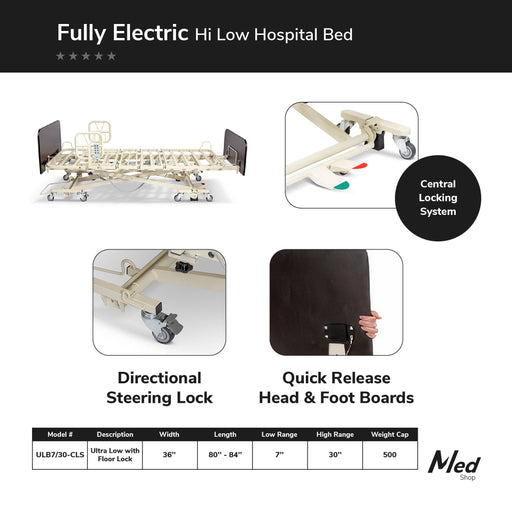
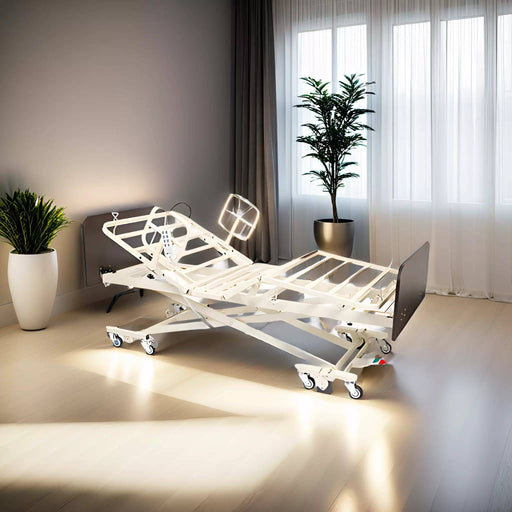


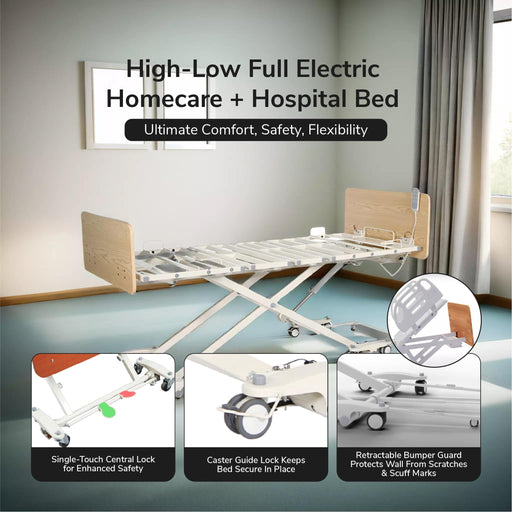
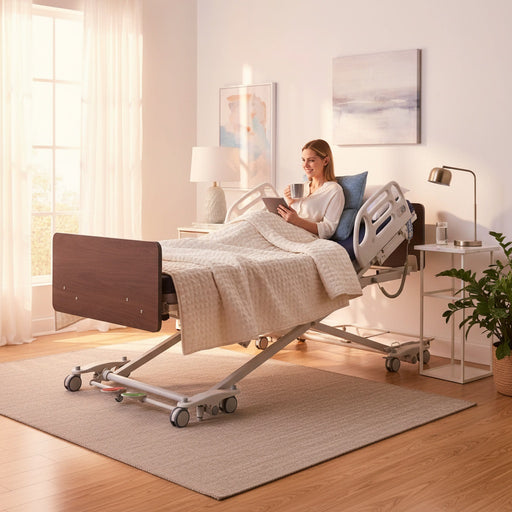
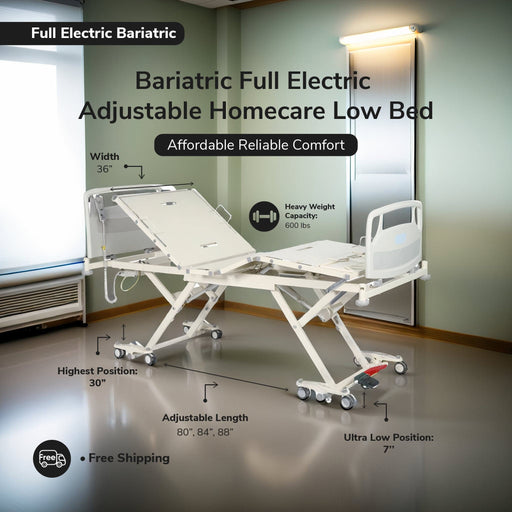
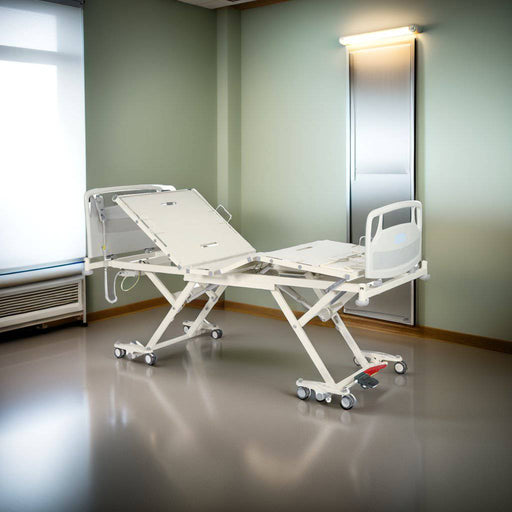
Leave a comment